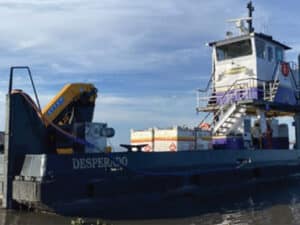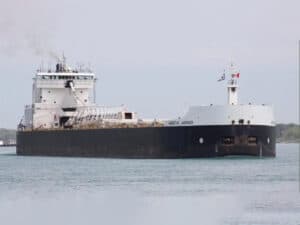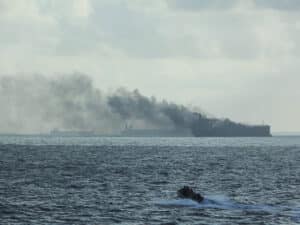
CLIA leadership talks about cruise industry safety … and growth plans
Written by Nick Blenkey With the Costa Concordia incident still impacting bookings, the top executives of Cruise Lines International Association (CLIA) gave delegates gathered at Cruise Shipping Miami their views on cruising’s safety record and policies as well as the industry’s prospects and commitment to growth in the coming months and years.
With the Costa Concordia incident still impacting bookings, the top executives of Cruise Lines International Association (CLIA) gave delegates gathered at Cruise Shipping Miami their views on cruising’s safety record and policies as well as the industry’s prospects and commitment to growth in the coming months and years.
Howard Frank, vice chairman of Carnival Corporation & plc and chairman of CLIA, said, in reference to the Costa Concordia tragedy: “As a cruise ship operator, there is nothing more heart-wrenching than the loss of one of your passengers or crewmembers and on behalf of the entire Carnival Corporation & plc family, I want to again extend our deepest sympathies to the families who have lost loved ones in this tragic accident.
“The cruise industry maintains an excellent safety record and every cruise operator recognizes that the safety and security of our guests and crew is our top priority…To that end, CLIA and its member lines are examining their safety practices and identifying areas for improvement. With the help of leading safety and technical experts, this will also include a comprehensive, top-to-bottom review of our shipboard safety and emergency response procedures…While the review is in its early stages, our industry has already taken additional steps to strengthen safety procedures beyond what is currently required by law. Our new muster policy demonstrates our industry’s willingness to move forward voluntarily to identify industry best practices and rapidly implement enhanced safety procedures when appropriate,” Frank said.
Frank added: “We have faced setbacks in the past, and in each case we have shown tremendous resiliency…and managed to continue to improve the health of our industry and grow the number of passengers from around the world…We have every reason to look to the future with confidence that cruising will remain a vibrant industry and we will continue to build on the last thirty-plus years of extraordinary growth.”
Citing a 7.5 percent average annual growth in passengers since 1980, Frank drew attention to the industry’s investment in growth. “Between now and 2015, 25 new ships will join the CLIA member line fleet. At the end of that period, the fleet will total 231 ships with more than 361,000 beds – enabling cruise lines to attract new passengers, visit new ports of call and establish new markets worldwide,” he said.
Emphasizing the “global nature” of the cruise industry, Frank said: “As our industry expands around the world, we will need to develop a global framework for all aspects of our business to ensure our future success. CLIA greatly values the relationships we have developed with our sister cruise associations and we plan to build on that success in order to advance our industry’s shared goals.”
Frank described plans, led by CLIA, to build a new framework of cruise and travel associations that better integrates efforts on behalf of members. “We have already authorized and approved funding for a global study – and expect to begin reviewing recommendations as early as this summer on the optimal global structure for our industry trade associations.
“A more united industry will enable us to more rapidly identify and implement industry best practices…to work more effectively with regulators worldwide as we strive for continuous improvements in cruise safety…and to act collectively to meet the future challenges that may arise in the more complex operating environment we face today. It will also provide a stronger foundation to enhance the industry’s visibility in key regions and help us realize the full economic potential of our industry,” Frank concluded.
CLIA’s president and CEO, Christine Duffy, also emphasized the cruise industry’s commitment to safety and prospects for continued growth and success. “At CLIA, our primary mission has always been to promote policies and practices that foster a safe and secure cruise environment for the millions of passengers who sail with us every year. Simply put: safety is our highest priority,” she said.
“To fulfill this mission, we work closely with maritime regulators to ensure that the highest operating standards are applied against everything we do. We regularly work with lawmakers to advance passenger safety. And – perhaps most importantly – we work with our member lines through more than 25 committees, working groups and task forces to identify and promote best practices throughout the industry.”
Outlining the industry’s response to the Concordia incident, Duffy said, “CLIA member cruise lines launched a Cruise Industry Operational Safety Review – a comprehensive assessment of the critical human factors and operational aspects of maritime safety,” describing the effort as a continuation of “a long tradition in our industry of taking action proactively and voluntarily to improve safety procedures on an ongoing basis.”
“One of the hallmarks of our industry,” she continued, “is that we treat every tragedy like the Costa Concordia as a profound reminder of our duty to put ourselves under a microscope so we can continuously improve our practices, procedures and performance.”
Noting that the fatality rate on cruise ships during the decade 2002 to 2011 was 0.13 per million people and 0.04 per million for passengers alone, Duffy added: “This is no cause for complacency. Not a single fatality is acceptable to our industry. But it is a testament to our industry’s commitment to continuous improvement.”
Looking forward, Duffy highlighted many of the factors in the cruise industry’s success story: a 125 percent increase in passengers since 2000, including a record 16.3 million in 2011; the introduction of 143 new ships during that time; and the introduction of 25 ships representing an investment of more than $10 billion between 2012 and 2015, including 14 this year. She also pointed out the potential for further growth based on relatively low market penetration, even in the mature American market where over 10 million residents took a cruise last year but represented only three percent of the population. And, she emphasized one of the “most promising developments in the cruise industry” – globalization.
“In 2000, only about nine percent of CLIA passengers came from outside North America. By 2010, the percentage of overseas passengers boarding CLIA ships had tripled to nearly 27 percent,” Duffy said.
“The cruise industry also continues to push the envelope to improve environmental sustainability. Our members have been at the forefront of wastewater treatment and emissions reduction, developing responsible practices and new technologies to protect marine environments. As you know, the implementation of the North American Emission Control Area – ECA – goes into effect in August and poses great challenges for our industry, with quantifiable impacts in the range of approximately 1.5 billion dollars and nearly 14,000 potential jobs lost.”
Outlining some of the latest developments in cruising, including new products for 2012 from CLIA member lines, new ports of embarkation, global deployments and itineraries, and trends in shipboard dining and river cruising, Duffy concluded by saying, “To me, our industry is defined more by our opportunities than by our accomplishments. Over the next decade, we have the opportunity to welcome millions of new passengers…bring them to exciting new destinations…and offer them unmatched travel experiences on state-of-the-art vessels.
“At CLIA, we will continue to work hand-in-hand with the leadership of our industry to make sure that as we reach these new heights, we also work diligently to continue to improve our safety procedures and record, so that we retain the confidence and trust of our loyal customers around the world.”
March 14, 2012





Leave a Reply
You must be logged in to post a comment.